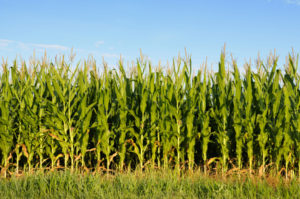![]()
Every Winter grape growers in San Joaquin and other counties in California attend update meetings sponsored by their local agricultural commissioner’s office. At those meetings they learn about the latest in state and federal pesticide regulations, worker safety requirements, nitrogen fertilizer reporting requirements and the like. Inevitably there is grumbling as the growers chafe under the every-increasing burden of regulations.
On top of that, many growers voluntarily choose to submit to additional regulations in the form of sustainability certification programs such as the Lodi Rules program. In the midst of complying with the bewildering complexity of all of these regulations it might be interesting to compare our situation with that of growers of other crops in other locales.
A common practice in California vineyards is to apply imidacloprid insecticide through the drip irrigation system to control vine mealybug, but let’s look at a different scenario. Let’s say that you are a corn or soybean grower in Ontario, Canada and you want to buy a bag of seed that has been treated with imidacloprid insecticide, the same product that is used in California for mealybug control. That bag of seed is classified as a class 12 insecticide in Ontario.
You aren’t going to buy a jug of the insecticide or apply it to your crop. You just want to buy a bag of treated seed. Here is what you have to do before you can buy that seed:
- You must attend a specific Integrated Pest Management course and obtain a certificate number indicating attendance. You then must supply that certificate number to your seed dealer.
- You must conduct a pest assessment and supply completed documents from that pest assessment to your seed dealer. There are two options for the pest assessment: 1) A Soil Inspection Pest Assessment completed by a grower that has completed the IPM training or a professional pest advisor; or 2) A Crop Inspection Pest Assessment completed by a professional pest advisor.

Then you must sign an “IPM Written Declaration Form” stating that you have considered IPM principles.
But what exactly is the “soil inspection pest assessment?” Here is what you have to do:
Divide your farm into plots that are not more than 100 acres (i.e. If your farm is 250 acres, you will have 3 plots). Conduct the soil pest assessment on 5 locations per plot (in the above example there will be 15 locations). If the average number of grubs is 2 or more, or if the average number of wireworms is 1 or more in each plot, then a Class 12 pesticide may be used if you submit a Pest Assessment Form prior to delivery of your seed.
Also, beginning on August 31, 2017, to be phased in on a geographic basis across Ontario over time, the soil pest assessment report will also need to be completed by a Professional Pest Advisor.
My point is this: while growers often complain about the regulations imposed by our state and federal governments, or the requirements of the Lodi Rules or other sustainability certification programs, they are no more extreme than what is required in other locations for a farmer to simply buy a bag of treated seed.
Have something interesting to say? Consider writing a guest blog article!
To subscribe to the Coffee Shop Blog, send an email to stephanie@lodiwine.com with the subject “blog subscribe.”
To join the Lodi Growers email list, send an email to stephanie@lodiwine.com with the subject “grower email subscribe” or click on “join our email list” to the right.
To receive Lodi Grower news and event promotions by mail, send your contact information to stephanie@lodiwine.com or call 209.367.4727.
For more information on the wines of Lodi, visit the Lodi Winegrape Commission’s consumer website, lodiwine.com.

